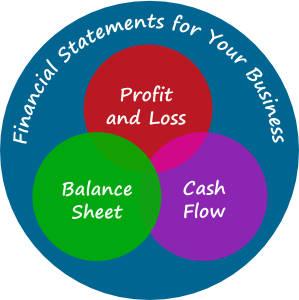Financial Statements for Your Business
As a business owner, you’re familiar with the importance of accurate financial records and the handling of financial data. This data helps your business run from one day to the next, helps in securing funding when necessary and makes tax season less of a stressor.
Are you familiar with the key financial statements that your business needs for accurate record-keeping? While there are hundreds that could apply, the three basic statements listed below are essential for almost any business.
Profit and Loss Statement.
Profit and loss statements – also commonly called income statements – allow you, as a business owner to project sales and expenses by tracking information over a few months to a year.
The statement determines net profit by subtracting the total operating expenses from the gross profit. In this situation, gross profit is defined as total sales minus the cost of goods sold. These goods include a variety of items – inventory, taxes, raw materials and so on. It’s important to also consider repairs, insurance, utilities, legal fees and other overhead costs for accuracy.
Balance Sheet.
Put simply, a balance sheet is a statement that gives and overall snapshot of the finances of a small business. A balance sheet allows the liabilities + owner’s equity = assets equation to balance out.
On the balance sheet, liabilities include short-term liabilities – like accounts payable and taxes – and long-term debt – including stockholder notes and bank loans. Owner’s equity refers to invested capital and retained earnings.
On the other side of the equation are assets. This refers to current assets – cash and holdings that can be converted to cash quickly like inventory, prepaid expenses and so on, and fixed assets – equipment, furniture, buildings, machinery and other business essentials.
Cash Flow Statement.
A cash flow statement details how much money is coming into and out of your business. Money coming in – or cash inflows – include cash sales, loans, investments and accounts receivable collections. Money going out – or cash outflows – refers to purchased equipment, inventory and paid expenses.
By calculating your business’s beginning cash balance, adding inflows and subtracting inflows, you can determine your ending cash balance.
These financial statements, when properly maintained, give an accurate overall look at the health of your business. Looking for other ways to improve your operations? Want to be sure you’re working within any applicable legal guidelines? Contact experienced business law attorney, Michael Hynum of Hynum Law in Harrisburg, PA today. We look forward to working with you.

